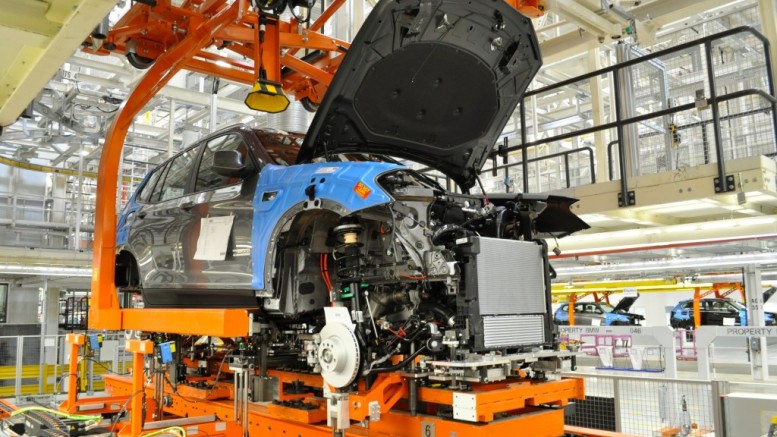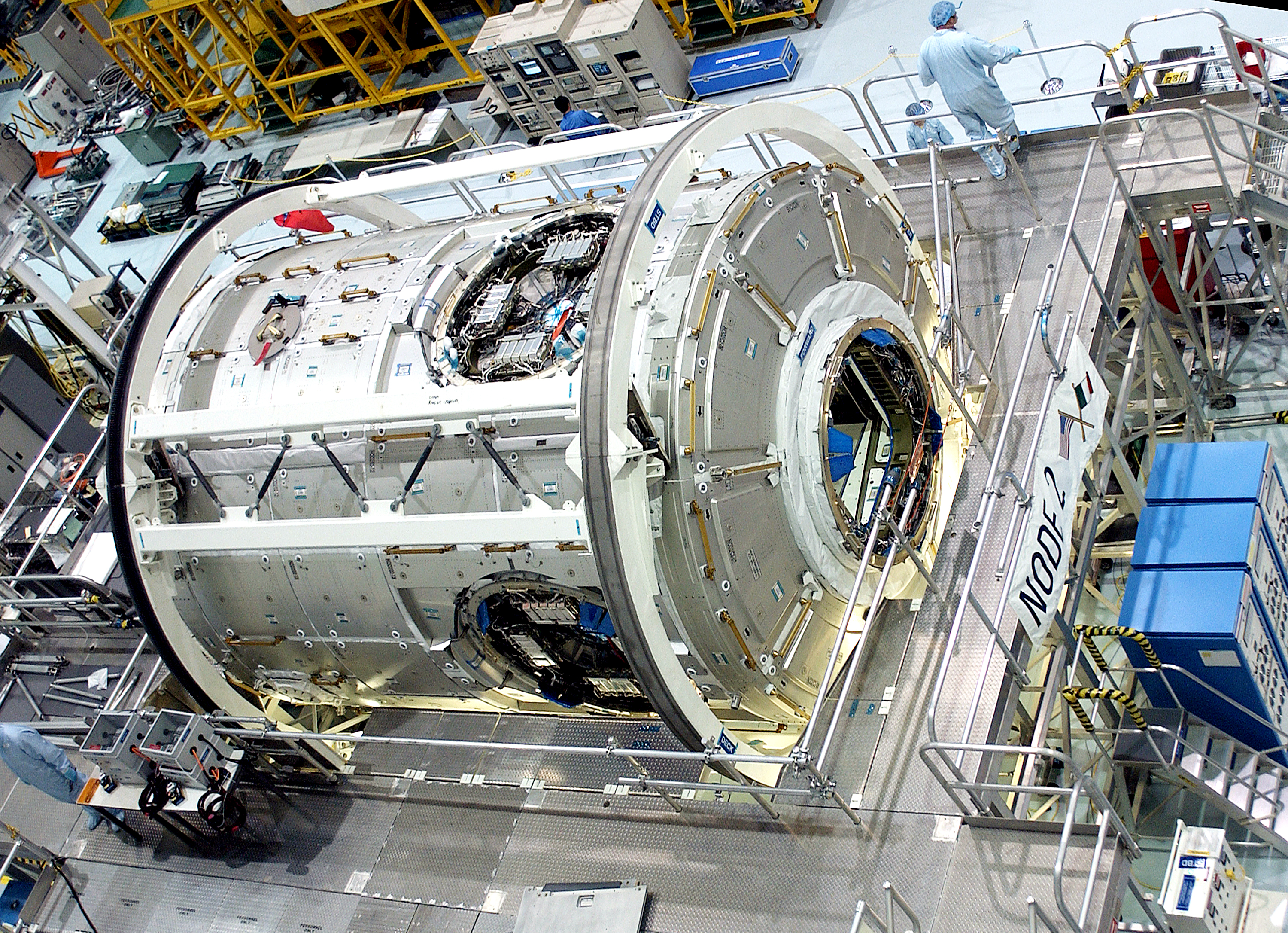Economic activity in the manufacturing sector expanded in May for the 29th consecutive month, and the overall economy grew for the 72nd consecutive month, say the nation’s supply executives in the latest Manufacturing ISM® Report On Business®.
The report was issued today by Bradley J. Holcomb, CPSM, CPSD, chair of the Institute for Supply Management® (ISM®) Manufacturing Business Survey Committee. “The May PMI® registered 52.8 percent, an increase of 1.3 percentage points over the April reading of 51.5 percent. The New Orders Index registered 55.8 percent, an increase of 2.3 percentage points from the reading of 53.5 percent in April. The Production Index registered 54.5 percent, 1.5 percentage points below the April reading of 56 percent. The Employment Index registered 51.7 percent, 3.4 percentage points above the April reading of 48.3 percent, reflecting growing employment levels from April. Inventories of raw materials registered 51.5 percent, an increase of 2 percentage points from the April reading of 49.5 percent. The Prices Index registered 49.5 percent, 9 percentage points above the April reading of 40.5 percent, indicating lower raw materials prices for the seventh consecutive month. Comments from the panel carry a positive tone in terms of an improving economy, increasing demand, and improving flow of goods through the West Coast ports. Also noted; however, are continuing concerns over the price of the US dollar and challenges affecting markets related to oil and gas industries.”
Of the 18 manufacturing industries, 14 are reporting growth in May in the following order: Apparel, Leather & Allied Products; Furniture & Related Products; Paper Products; Food, Beverage & Tobacco Products; Nonmetallic Mineral Products; Plastics & Rubber Products; Electrical Equipment, Appliances & Components; Primary Metals; Transportation Equipment; Printing & Related Support Activities; Fabricated Metal Products; Machinery; Miscellaneous Manufacturing; and Chemical Products. The two industries reporting contraction in May are: Textile Mills; and Computer & Electronic Products.
WHAT RESPONDENTS ARE SAYING …
- “Economy is showing signs of improvement.” (Food, Beverage & Tobacco Products)
- “Automotive is still strong. However, steel prices have dropped due to overcapacity and the strong US dollar.” (Fabricated Metal Products)
- “Overall business is steady. Employment in this area is up, a good sign.” (Transportation Equipment)
- “Strong spring demand in agriculture.” (Chemical Products)
- “The exchange rate on the dollar is hurting our sales in Asia. The conversion rate is lowering our profit in Europe where we sell in Euros.” (Computer & Electronic Products)
- “Sales are starting to stabilize and show improvement from prior months, Year to Date (YTD). Concerns still exist with the overall economy.” (Apparel, Leather & Allied Products)
- “Continued challenges in markets related to oil and gas industries.” (Miscellaneous Manufacturing)
- “Oversupply is continuing to tighten profit margins.” (Wood Products)
- “West Coast port issues have eased up and our incoming imports are flowing again.” (Machinery)
- “Chemicals pricing seems to have bottomed and is slowly rising again.” (Plastics & Rubber Products)
| MANUFACTURING AT A GLANCE MAY 2015 |
||||||
|---|---|---|---|---|---|---|
|
Index |
Series Index May |
Series Index Apr |
Percentage Point Change |
Direction |
Rate of Change |
Trend* (Months) |
| PMI® | 52.8 | 51.5 | +1.3 | Growing | Faster | 29 |
| New Orders | 55.8 | 53.5 | +2.3 | Growing | Faster | 30 |
| Production | 54.5 | 56.0 | -1.5 | Growing | Slower | 33 |
| Employment | 51.7 | 48.3 | +3.4 | Growing | From Contracting | 1 |
| Supplier Deliveries | 50.7 | 50.1 | +0.6 | Slowing | Faster | 24 |
| Inventories | 51.5 | 49.5 | +2.0 | Growing | From Contracting | 1 |
| Customers’ Inventories | 45.5 | 44.0 | +1.5 | Too Low | Slower | 6 |
| Prices | 49.5 | 40.5 | +9.0 | Decreasing | Slower | 7 |
| Backlog of Orders | 53.5 | 49.5 | +4.0 | Growing | From Contracting | 1 |
| Exports | 50.0 | 51.5 | -1.5 | Unchanged | From Growing | 1 |
| Imports | 55.0 | 54.0 | +1.0 | Growing | Faster | 28 |
| OVERALL ECONOMY | Growing | Faster | 72 | |||
| Manufacturing Sector | Growing | Faster | 29 | |||
Manufacturing ISM® Report On Business® data is seasonally adjusted for New Orders, Production, Employment and Supplier Deliveries indexes.
*Number of months moving in current direction.
COMMODITIES REPORTED UP/DOWN IN PRICE AND IN SHORT SUPPLY
Commodities Up in Price
Copper; Diesel Fuel; HDPE Resin; and Nickel.
Commodities Down in Price
Aluminum (6); Corn; Scrap Steel (6); Stainless Steel (7); Steel (6); and Steel — Hot Rolled (7).
Commodities in Short Supply
There were no commodities listed in short supply for the month of May.
Note: The number of consecutive months the commodity is listed is indicated after each item.
MAY 2015 MANUFACTURING INDEX SUMMARIES
PMI®
Manufacturing expanded in May as the PMI® registered 52.8 percent, an increase of 1.3 percentage points over the April reading of 51.5 percent, indicating growth in manufacturing for the 29th consecutive month. A reading above 50 percent indicates that the manufacturing economy is generally expanding; below 50 percent indicates that it is generally contracting.
A PMI® in excess of 43.1 percent, over a period of time, generally indicates an expansion of the overall economy. Therefore, the May PMI® indicates growth for the 72nd consecutive month in the overall economy, and indicates expansion in the manufacturing sector for the 29th consecutive month. Holcomb stated, “The past relationship between the PMI® and the overall economy indicates that the average PMI® for January through May (52.4 percent) corresponds to a 2.9 percent increase in real gross domestic product (GDP) on an annualized basis. In addition, if the PMI® for May (52.8 percent) is annualized, it corresponds to a 3 percent increase in real GDP annually.”
THE LAST 12 MONTHS
| Month | PMI® | Month | PMI® | |
|---|---|---|---|---|
| May 2015 | 52.8 | Nov 2014 | 57.6 | |
| Apr 2015 | 51.5 | Oct 2014 | 57.9 | |
| Mar 2015 | 51.5 | Sep 2014 | 56.1 | |
| Feb 2015 | 52.9 | Aug 2014 | 58.1 | |
| Jan 2015 | 53.5 | Jul 2014 | 56.4 | |
| Dec 2014 | 55.1 | Jun 2014 | 55.7 | |
| Average for 12 months – 54.9 High – 58.1 Low – 51.5 |
||||
New Orders
ISM®’s New Orders Index registered 55.8 percent in May, an increase of 2.3 percentage points when compared to the April reading of 53.5 percent, indicating growth in new orders for the 30th consecutive month. A New Orders Index above 52.1 percent, over time, is generally consistent with an increase in the Census Bureau’s series on manufacturing orders (in constant 2000 dollars).
The 11 industries reporting growth in new orders in May — listed in order — are: Apparel, Leather & Allied Products; Nonmetallic Mineral Products; Furniture & Related Products; Paper Products; Food, Beverage & Tobacco Products; Plastics & Rubber Products; Machinery; Primary Metals; Transportation Equipment; Miscellaneous Manufacturing; and Chemical Products. The only industry reporting a decrease in new orders during May is Petroleum & Coal Products. Six industries reported no change in new orders in May compared to April.
| New Orders |
% Better |
% Same |
% Worse |
Net | Index |
|---|---|---|---|---|---|
| May 2015 | 29 | 57 | 14 | +15 | 55.8 |
| Apr 2015 | 35 | 48 | 17 | +18 | 53.5 |
| Mar 2015 | 27 | 58 | 15 | +12 | 51.8 |
| Feb 2015 | 28 | 55 | 17 | +11 | 52.5 |
Production
ISM®’s Production Index registered 54.5 percent in May, which is a decrease of 1.5 percentage points when compared to the 56 percent reported in April, indicating growth in production for the 33rd consecutive month. An index above 51.1 percent, over time, is generally consistent with an increase in the Federal Reserve Board’s Industrial Production figures.
The 11 industries reporting growth in production during the month of May — listed in order — are: Apparel, Leather & Allied Products; Nonmetallic Mineral Products; Paper Products; Primary Metals; Transportation Equipment; Machinery; Furniture & Related Products; Food, Beverage & Tobacco Products; Plastics & Rubber Products; Fabricated Metal Products; and Chemical Products. The only industry reporting a decrease in production during May is Computer & Electronic Products. Six industries reported no change in production in May compared to April.
| Production | % Better |
% Same |
% Worse |
Net | Index |
|---|---|---|---|---|---|
| May 2015 | 27 | 62 | 11 | +16 | 54.5 |
| Apr 2015 | 36 | 52 | 12 | +24 | 56.0 |
| Mar 2015 | 25 | 64 | 11 | +14 | 53.8 |
| Feb 2015 | 27 | 57 | 16 | +11 | 53.7 |
Employment
ISM®’s Employment Index registered 51.7 percent in May, which is an increase of 3.4 percentage points when compared to the 48.3 percent reported in April, and indicates a return to growth in employment following only one month of contraction in the past 24 months. An Employment Index above 50.6 percent, over time, is generally consistent with an increase in the Bureau of Labor Statistics (BLS) data on manufacturing employment.
Of the 18 manufacturing industries, in May, 14 industries reported employment growth in the following order: Textile Mills; Printing & Related Support Activities; Petroleum & Coal Products; Food, Beverage & Tobacco Products; Furniture & Related Products; Fabricated Metal Products; Electrical Equipment, Appliances & Components; Machinery; Plastics & Rubber Products; Primary Metals; Paper Products; Miscellaneous Manufacturing; Chemical Products; and Transportation Equipment. The only industry reporting a decrease in employment in May is Computer & Electronic Products.
| Employment | % Higher |
% Same |
% Lower |
Net | Index |
|---|---|---|---|---|---|
| May 2015 | 20 | 68 | 12 | +8 | 51.7 |
| Apr 2015 | 16 | 72 | 12 | +4 | 48.3 |
| Mar 2015 | 17 | 68 | 15 | +2 | 50.0 |
| Feb 2015 | 18 | 68 | 14 | +4 | 51.4 |
Supplier Deliveries
The delivery performance of suppliers to manufacturing organizations slowed in May at a faster rate as the Supplier Deliveries Index registered 50.7 percent. This month’s reading is 0.6 percentage point higher than the 50.1 percent reported in April. A reading below 50 percent indicates faster deliveries, while a reading above 50 percent indicates slower deliveries.
The six industries reporting slower supplier deliveries in May — listed in order — are: Electrical Equipment, Appliances & Components; Plastics & Rubber Products; Paper Products; Food, Beverage & Tobacco Products; Fabricated Metal Products; and Transportation Equipment. The five industries reporting faster supplier deliveries during May are: Machinery; Miscellaneous Manufacturing; Chemical Products; Computer & Electronic Products; and Primary Metals. Seven industries reported no change in supplier deliveries in May compared to April.
| Supplier Deliveries |
% Slower |
% Same |
% Faster |
Net | Index |
|---|---|---|---|---|---|
| May 2015 | 11 | 80 | 9 | +2 | 50.7 |
| Apr 2015 | 12 | 80 | 8 | +4 | 50.1 |
| Mar 2015 | 14 | 76 | 10 | +4 | 50.5 |
| Feb 2015 | 17 | 75 | 8 | +9 | 54.3 |
Inventories*
The Inventories Index registered 51.5 percent in May, which is 2 percentage points higher than the 49.5 percent registered in April, indicating raw materials inventories are growing in May following a month of contraction in inventories in April. An Inventories Index greater than 42.9 percent, over time, is generally consistent with expansion in the Bureau of Economic Analysis (BEA) figures on overall manufacturing inventories (in chained 2000 dollars).
The seven industries reporting higher inventories in May — listed in order — are: Electrical Equipment, Appliances & Components; Furniture & Related Products; Miscellaneous Manufacturing; Plastics & Rubber Products; Primary Metals; Chemical Products; and Computer & Electronic Products. The four industries reporting lower inventories in May are: Textile Mills; Nonmetallic Mineral Products; Fabricated Metal Products; and Food, Beverage & Tobacco Products. Seven industries reported no change in inventories in May compared to April.
| Inventories | % Higher |
% Same |
% Lower |
Net | Index |
|---|---|---|---|---|---|
| May 2015 | 17 | 69 | 14 | +3 | 51.5 |
| Apr 2015 | 19 | 61 | 20 | -1 | 49.5 |
| Mar 2015 | 15 | 73 | 12 | +3 | 51.5 |
| Feb 2015 | 21 | 63 | 16 | +5 | 52.5 |
Customers’ Inventories*
ISM®’s Customers’ Inventories Index registered 45.5 percent in May, an increase of 1.5 percentage points from April when customers’ inventories registered 44 percent. May’s reading indicates that customers’ inventories are considered to be too low, but higher than in April.
The two manufacturing industries reporting customers’ inventories as being too high during the month of May are: Fabricated Metal Products; and Paper Products. The 10 industries reporting customers’ inventories as too low during May — listed in order — are: Petroleum & Coal Products; Apparel, Leather & Allied Products; Electrical Equipment, Appliances & Components; Machinery; Primary Metals; Transportation Equipment; Miscellaneous Manufacturing; Chemical Products; Computer & Electronic Products; and Food, Beverage & Tobacco Products.
| Customers’ Inventories |
% Reporting |
%Too High |
%About Right |
%Too Low |
Net | Index |
|---|---|---|---|---|---|---|
| May 2015 | 63 | 13 | 65 | 22 | -9 | 45.5 |
| Apr 2015 | 66 | 11 | 66 | 23 | -12 | 44.0 |
| Mar 2015 | 60 | 12 | 67 | 21 | -9 | 45.5 |
| Feb 2015 | 65 | 12 | 69 | 19 | -7 | 46.5 |
Prices*
The ISM® Prices Index registered 49.5 percent in May, an increase of 9 percentage points when compared to the April reading of 40.5 percent, indicating a decrease in raw materials prices for the seventh consecutive month. In May, 15 percent of respondents reported paying higher prices, 16 percent reported paying lower prices, and 69 percent of supply executives reported paying the same prices as in April. A Prices Index above 52.1 percent, over time, is generally consistent with an increase in the Bureau of Labor Statistics (BLS) Producer Price Index for Intermediate Materials.
Of the 18 manufacturing industries, the five industries reporting paying increased prices for their raw materials in May are: Plastics & Rubber Products; Primary Metals; Computer & Electronic Products; Paper Products; and Miscellaneous Manufacturing. The seven industries reporting paying lower prices during the month of May — listed in order — are: Wood Products; Petroleum & Coal Products; Fabricated Metal Products; Furniture & Related Products; Machinery; Transportation Equipment; and Chemical Products. Six industries reported no change in prices in May compared to April.
| Prices | % Higher |
% Same |
% Lower |
Net | Index |
|---|---|---|---|---|---|
| May 2015 | 15 | 69 | 16 | -1 | 49.5 |
| Apr 2015 | 7 | 67 | 26 | -19 | 40.5 |
| Mar 2015 | 10 | 58 | 32 | -22 | 39.0 |
| Feb 2015 | 8 | 54 | 38 | -30 | 35.0 |
Backlog of Orders*
ISM®’s Backlog of Orders Index registered 53.5 percent in May, an increase of 4 percentage points over the April reading of 49.5 percent, indicating growth in order backlogs following two consecutive months of contraction in the backlog of orders. Of the 88 percent of respondents who measure their backlog of orders, 26 percent reported greater backlogs, 19 percent reported smaller backlogs, and 55 percent reported no change from April.
The nine industries reporting increased order backlogs in May — listed in order — are: Primary Metals; Textile Mills; Apparel, Leather & Allied Products; Nonmetallic Mineral Products; Electrical Equipment, Appliances & Components; Miscellaneous Manufacturing; Paper Products; Food, Beverage & Tobacco Products; and Machinery. The five industries reporting a decrease in order backlogs during May are: Fabricated Metal Products; Plastics & Rubber Products; Chemical Products; Transportation Equipment; and Furniture & Related Products.
| Backlog of Orders |
% Reporting |
% Greater |
% Same |
% Less |
Net | Index |
|---|---|---|---|---|---|---|
| May 2015 | 88 | 26 | 55 | 19 | +7 | 53.5 |
| Apr 2015 | 85 | 25 | 49 | 26 | -1 | 49.5 |
| Mar 2015 | 84 | 18 | 63 | 19 | -1 | 49.5 |
| Feb 2015 | 86 | 23 | 57 | 20 | +3 | 51.5 |
New Export Orders*
ISM®’s New Export Orders Index registered 50 percent in May, indicating that the volume of new export orders was unchanged from April.
The seven industries reporting growth in new export orders in May — listed in order — are: Apparel, Leather & Allied Products; Furniture & Related Products; Electrical Equipment, Appliances & Components; Food, Beverage & Tobacco Products; Paper Products; Fabricated Metal Products; and Transportation Equipment. The five industries reporting a decrease in new export orders during May are: Primary Metals; Miscellaneous Manufacturing; Plastics & Rubber Products; Chemical Products; and Machinery. Six industries reported no change in New Export Orders in May compared to April.
| New Export Orders |
% Reporting |
% Higher |
% Same |
% Lower |
Net | Index |
|---|---|---|---|---|---|---|
| May 2015 | 78 | 11 | 78 | 11 | 0 | 50.0 |
| Apr 2015 | 77 | 17 | 69 | 14 | +3 | 51.5 |
| Mar 2015 | 73 | 10 | 75 | 15 | -5 | 47.5 |
| Feb 2015 | 74 | 11 | 75 | 14 | -3 | 48.5 |
Imports*
ISM®’s Imports Index registered 55 percent in May, which is 1 percentage point higher than the 54 percent reported in April. This month’s reading represents 28 consecutive months of growth in imports.
The 10 industries reporting growth in imports during the month of May — listed in order — are: Textile Mills; Nonmetallic Mineral Products; Furniture & Related Products; Miscellaneous Manufacturing; Machinery; Food, Beverage & Tobacco Products; Fabricated Metal Products; Transportation Equipment; Chemical Products; and Computer & Electronic Products. The only industry reporting a decrease in imports during May is Plastics & Rubber Products.
| Imports | % Reporting |
% Higher |
% Same |
% Lower |
Net | Index |
|---|---|---|---|---|---|---|
| May 2015 | 79 | 16 | 78 | 6 | +10 | 55.0 |
| Apr 2015 | 77 | 15 | 78 | 7 | +8 | 54.0 |
| Mar 2015 | 75 | 17 | 71 | 12 | +5 | 52.5 |
| Feb 2015 | 75 | 17 | 74 | 9 | +8 | 54.0 |
* The Inventories, Customers’ Inventories, Prices, Backlog of Orders, New Export Orders and Imports Indexes do not meet the accepted criteria for seasonal adjustments.
Buying Policy
Average commitment lead time for Capital Expenditures increased 1 day to 133 days. Average lead time for Production Materials remained the same as in April at 66 days. Average lead time for Maintenance, Repair and Operating (MRO) Supplies increased 3 days to 31 days.
| Percent Reporting | |||||||
|---|---|---|---|---|---|---|---|
|
Capital Expenditures |
Hand- to- Mouth |
30 Days |
60 Days |
90 Days |
6 Months |
1 Year+ |
Average Days |
| May 2015 | 26 | 5 | 10 | 20 | 19 | 20 | 133 |
| Apr 2015 | 26 | 7 | 8 | 16 | 25 | 18 | 132 |
| Mar 2015 | 27 | 4 | 9 | 18 | 22 | 20 | 136 |
| Feb 2015 | 27 | 6 | 11 | 14 | 23 | 19 | 132 |
|
Production Materials |
Hand- to- Mouth |
30 Days |
60 Days |
90 Days |
6 Months |
1 Year+ |
Average Days |
| May 2015 | 15 | 35 | 24 | 13 | 10 | 3 | 66 |
| Apr 2015 | 15 | 34 | 24 | 15 | 9 | 3 | 66 |
| Mar 2015 | 15 | 36 | 23 | 16 | 7 | 3 | 63 |
| Feb 2015 | 19 | 32 | 23 | 14 | 9 | 3 | 64 |
|
MRO Supplies |
Hand- to- Mouth |
30 Days |
60 Days |
90 Days |
6 Months |
1 Year+ |
Average Days |
| May 2015 | 44 | 36 | 13 | 5 | 1 | 1 | 31 |
| Apr 2015 | 44 | 36 | 14 | 5 | 1 | 0 | 28 |
| Mar 2015 | 49 | 31 | 15 | 4 | 1 | 0 | 26 |
| Feb 2015 | 45 | 35 | 15 | 5 | 0 | 0 | 26 |
About This Report
The data presented herein is obtained from a survey of manufacturing supply managers based on information they have collected within their respective organizations. ISM® makes no representation, other than that stated within this release, regarding the individual company data collection procedures. The data should be compared to all other economic data sources when used in decision-making.
Data and Method of Presentation
The Manufacturing ISM® Report On Business® is based on data compiled from purchasing and supply executives nationwide. Membership of the Manufacturing Business Survey Committee is diversified by NAICS, based on each industry’s contribution to gross domestic product (GDP). Manufacturing Business Survey Committee responses are divided into the following NAICS code categories: Food, Beverage & Tobacco Products; Textile Mills; Apparel, Leather & Allied Products; Wood Products; Paper Products; Printing & Related Support Activities; Petroleum & Coal Products; Chemical Products; Plastics & Rubber Products; Nonmetallic Mineral Products; Primary Metals; Fabricated Metal Products; Machinery; Computer & Electronic Products; Electrical Equipment, Appliances & Components; Transportation Equipment; Furniture & Related Products; and Miscellaneous Manufacturing (products such as medical equipment and supplies, jewelry, sporting goods, toys and office supplies).
Survey responses reflect the change, if any, in the current month compared to the previous month. For each of the indicators measured (New Orders, Backlog of Orders, New Export Orders, Imports, Production, Supplier Deliveries, Inventories, Customers’ Inventories, Employment and Prices), this report shows the percentage reporting each response, the net difference between the number of responses in the positive economic direction (higher, better and slower for Supplier Deliveries) and the negative economic direction (lower, worse and faster for Supplier Deliveries), and the diffusion index. Responses are raw data and are never changed. The diffusion index includes the percent of positive responses plus one-half of those responding the same (considered positive).
The resulting single index number for those meeting the criteria for seasonal adjustments (PMI®, New Orders, Production, Employment and Supplier Deliveries) is then seasonally adjusted to allow for the effects of repetitive intra-year variations resulting primarily from normal differences in weather conditions, various institutional arrangements, and differences attributable to non-moveable holidays. All seasonal adjustment factors are subject annually to relatively minor changes when conditions warrant them. The PMI® is a composite index based on the diffusion indexes of five of the indexes with equal weights: New Orders (seasonally adjusted), Production (seasonally adjusted), Employment (seasonally adjusted), Supplier Deliveries (seasonally adjusted), and Inventories.
Diffusion indexes have the properties of leading indicators and are convenient summary measures showing the prevailing direction of change and the scope of change. A PMI® reading above 50 percent indicates that the manufacturing economy is generally expanding; below 50 percent indicates that it is generally declining. A PMI® in excess of 43.1 percent, over a period of time, indicates that the overall economy, or gross domestic product (GDP), is generally expanding; below 43.1 percent, it is generally declining. The distance from 50 percent or 43.1 percent is indicative of the strength of the expansion or decline. With some of the indicators within this report, ISM® has indicated the departure point between expansion and decline of comparable government series, as determined by regression analysis.
The Manufacturing ISM® Report On Business® survey is sent out to Manufacturing Business Survey Committee respondents the first part of each month. Respondents are asked to ONLY report on information for the current month. ISM® receives survey responses throughout most of any given month, with the majority of respondents generally waiting until late in the month to submit responses in order to give the most accurate picture of current business activity. ISM® then compiles the report for release on the first business day of the following month.
The industries reporting growth, as indicated in the Manufacturing ISM® Report On Business® monthly report, are listed in the order of most growth to least growth. For the industries reporting contraction or decreases, those are listed in the order of the highest level of contraction/decrease to the least level of contraction/decrease.
Responses to Buying Policy reflect the percent reporting the current month’s lead time, the approximate weighted number of days ahead for which commitments are made for Production Materials; Capital Expenditures; and Maintenance, Repair and Operating (MRO) Supplies, expressed as hand-to-mouth (five days), 30 days, 60 days, 90 days, six months (180 days), a year or more (360 days), and the weighted average number of days. These responses are raw data, never revised, and not seasonally adjusted since there is no significant seasonal pattern.
About Institute for Supply Management®
Founded in 1915 as the first supply management institute in the world, Institute for Supply Management® (ISM®) is committed to advancing the practice of supply chain management to drive value and competitive advantage for its members, contributing to a prosperous and sustainable world. This year, ISM celebrates 100 years of leading, innovating and guiding the profession through the renowned ISM Report On Business®, highly regarded certification programs, and industry-standard training and educational resources. ISM is a not-for-profit organization with global influence, serving supply chain professionals in more than 90 countries. This report has been issued by the association since 1931, except for a four-year interruption during World War II.
The full text version of the Manufacturing ISM® Report On Business® is posted on ISM®‘s website at www.instituteforsupplymanagement.org on the first business day* of every month after 10:00 a.m. (ET).
The next Manufacturing ISM® Report On Business® featuring the June 2015 data will be released at 10:00 a.m. (ET) on Wednesday, July 1, 2015.
*Unless the NYSE is closed.






Be the first to comment on "New Orders, Production, Employment and Inventories Growing"